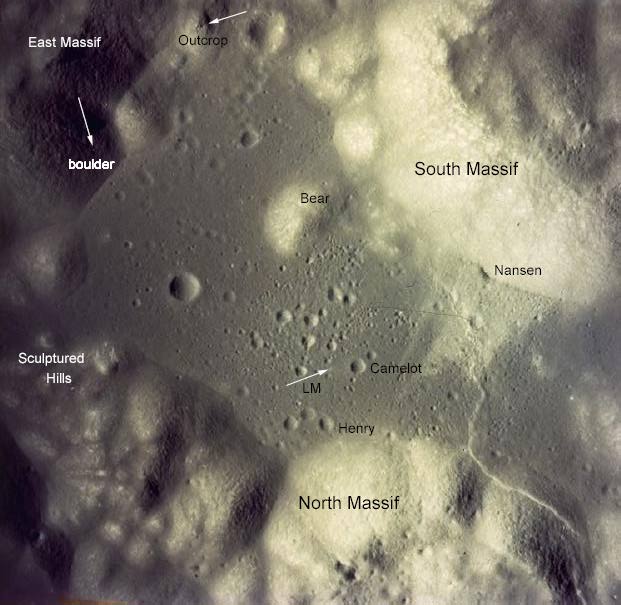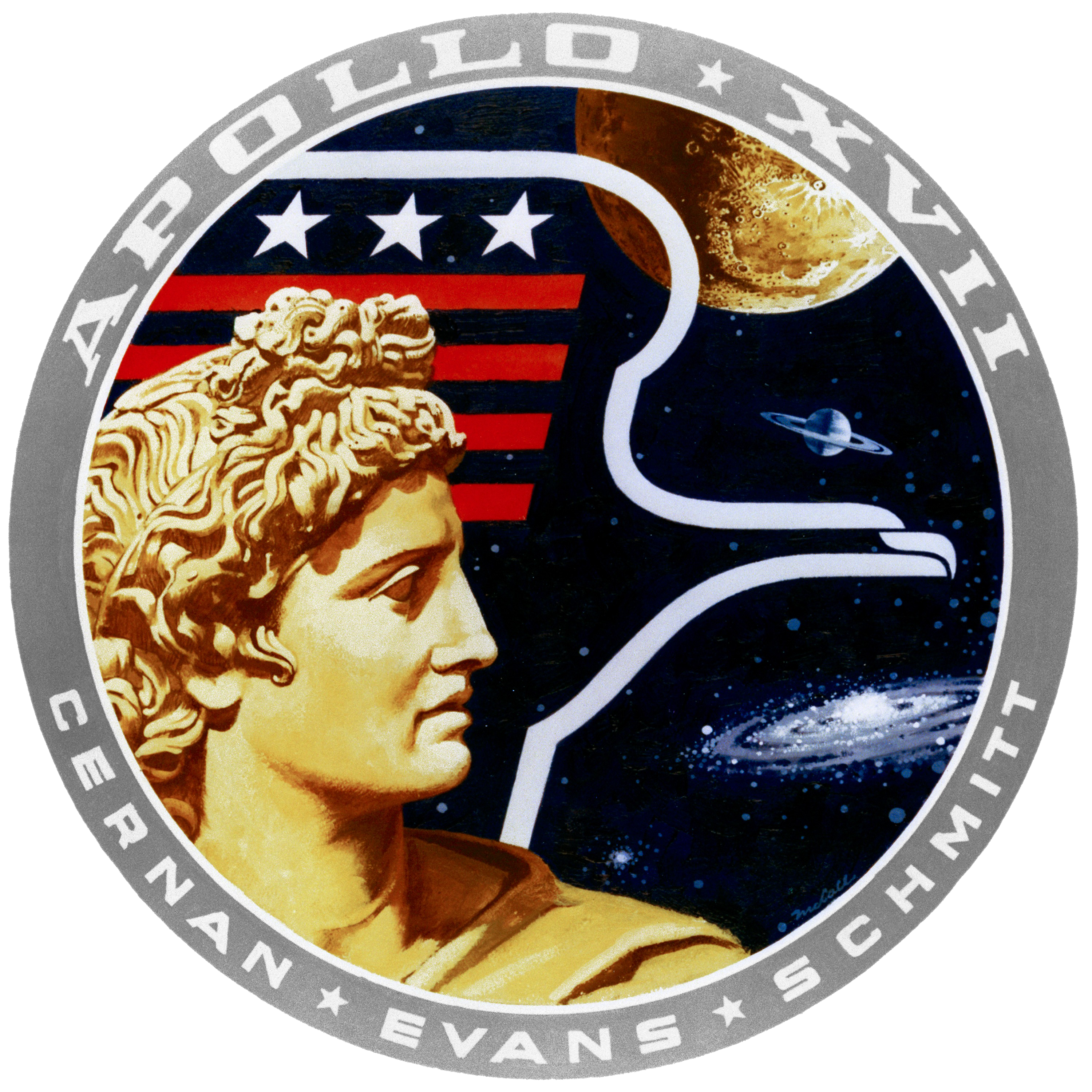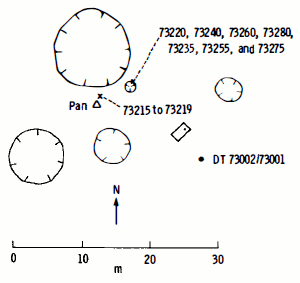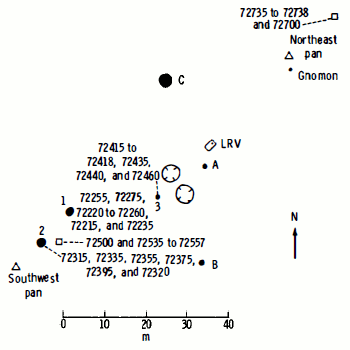|
Hess-Apollo (crater)
Hess-Apollo is a feature on Earth's Moon, a crater in Taurus–Littrow valley. Astronauts Eugene Cernan and Harrison Schmitt landed north of it in 1972, on the Apollo 17 mission, but did not visit it. The astronauts referred to it simply as Hess during the mission. Hess is adjacent to the similarly sized crater Mackin. To the north is Camelot, to the northwest are Shorty and Lara, and to the west is Nansen. To the northeast is Emory Emory may refer to: Places * Emory, Texas, U.S. * Emory (crater), on the moon * Emory Peak, in Texas, U.S. * Emory River, in Tennessee, U.S. Education * Emory and Henry College, or simply Emory, in Emory, Virginia, U.S. * Emory University .... The crater was named by the astronauts after geologist Harry Hammond Hess. Apollo 17 Lunar Surface Journal, Corrected Tran ... [...More Info...] [...Related Items...] OR: [Wikipedia] [Google] [Baidu] |
Hess Crater AS17-P-2750 ASU
Hess or Heß may refer to: * Hess (surname), also ''Heß'' in German, people with the surname Hess * Hess, Oklahoma, a community in the United States * Hess Educational Organization, the largest private provider of English instruction in the Republic of China * Hess Corporation, an integrated oil and gasoline company (USA) * H.E.S.S., an experiment in Gamma-ray astronomy * Hess's law, a law in chemistry * Hess's, a defunct department store chain based out of Allentown, Pennsylvania * Carrosserie Hess AG, a commercial vehicle manufacturer in Switzerland * Hess Catalogue of compositions of Ludwig van Beethoven * Hess (crater) Hess is a lunar impact crater that lies in the southern hemisphere on the far side of the Moon. The crater rim has been worn by subsequent impacts, leaving a low, eroded outer wall. The flat interior has been resurfaced by lava flows and is free ..., a lunar impact crater on the far side of the Moon See also * Hesse (other) {{disambig ... [...More Info...] [...Related Items...] OR: [Wikipedia] [Google] [Baidu] |
Moon
The Moon is Earth's only natural satellite. It is the fifth largest satellite in the Solar System and the largest and most massive relative to its parent planet, with a diameter about one-quarter that of Earth (comparable to the width of Australia). The Moon is a planetary-mass object with a differentiated rocky body, making it a satellite planet under the geophysical definitions of the term and larger than all known dwarf planets of the Solar System. It lacks any significant atmosphere, hydrosphere, or magnetic field. Its surface gravity is about one-sixth of Earth's at , with Jupiter's moon Io being the only satellite in the Solar System known to have a higher surface gravity and density. The Moon orbits Earth at an average distance of , or about 30 times Earth's diameter. Its gravitational influence is the main driver of Earth's tides and very slowly lengthens Earth's day. The Moon's orbit around Earth has a sidereal period of 27.3 days. During each synodic period ... [...More Info...] [...Related Items...] OR: [Wikipedia] [Google] [Baidu] |
Taurus–Littrow
Taurus–Littrow is a lunar valley located on the near side at the coordinates . It served as the landing site for the American Apollo 17 mission in December 1972, the last crewed mission to the Moon. The valley is located on the southeastern edge of Mare Serenitatis along a ring of mountains formed between 3.8 and 3.9 billion years ago when a large object impacted the Moon, forming the Serenitatis basin and pushing rock outward and upward. Taurus–Littrow is located in the Taurus mountain range and south of Littrow crater, features from which the valley received its name. The valley's name, coined by the Apollo 17 crew, was approved by the International Astronomical Union in 1973. Data collected during Apollo 17 indicate that the valley is composed primarily of feldspar-rich breccia in the large massifs surrounding the valley and basalt underlying the valley floor, covered by an unconsolidated layer of mixed material formed by various geologic events. Taurus–Littrow was ... [...More Info...] [...Related Items...] OR: [Wikipedia] [Google] [Baidu] |
Eugene Cernan
Eugene Andrew Cernan (; March 14, 1934 – January 16, 2017) was an American astronaut, naval aviator, electrical engineer, aeronautical engineer, and fighter pilot. During the Apollo 17 mission, Cernan became the eleventh human being to walk on the Moon. As he re-entered the Apollo Lunar Module after Harrison Schmitt on their third and final lunar excursion, he remains as of 2022, famously: "The last man on the Moon". Before becoming an astronaut, Cernan graduated with a Bachelor of Science degree in electrical engineering from Purdue University and joined the U.S. Navy through the Naval Reserve Officers Training Corps (NROTC). After flight training, he received his naval aviator wings and served as a fighter pilot. In 1963, he received a Master of Science degree in aeronautical engineering from the U.S. Naval Postgraduate School. Achieving the rank of captain, he retired from the Navy in 1976. Cernan traveled into space three times and to the Moon twice: as pilot of ... [...More Info...] [...Related Items...] OR: [Wikipedia] [Google] [Baidu] |
Harrison Schmitt
Harrison Hagan Schmitt (born July 3, 1935) is an American geologist, retired NASA astronaut, university professor, former U.S. senator from New Mexico, and the most recent living person—and only person without a background in military aviation—to have walked on the Moon. In December 1972, as one of the crew onboard Apollo 17, Schmitt became the first member of NASA's first scientist-astronaut group to fly in space. As Apollo 17 was the last of the Apollo missions, he also became the twelfth and second-youngest person to set foot on the Moon and the second-to-last person to step off of the Moon (he boarded the Lunar Module shortly before commander Eugene Cernan). Schmitt also remains the only professional scientist to have flown beyond low Earth orbit and to have visited the Moon. He was influential within the community of geologists supporting the Apollo program and, before starting his own preparations for an Apollo mission, had been one of the scientists training those A ... [...More Info...] [...Related Items...] OR: [Wikipedia] [Google] [Baidu] |
Apollo 17
Apollo 17 (December 7–19, 1972) was the final mission of NASA's Apollo program, the most recent time humans have set foot on the Moon or traveled beyond low Earth orbit. Commander Gene Cernan and Lunar Module Pilot Harrison Schmitt walked on the Moon, while Command Module Pilot Ronald Evans (astronaut), Ronald Evans orbited above. Schmitt was the only professional geologist to land on the Moon; he was selected in place of Joe Engle, as NASA had been under pressure to send a scientist to the Moon. The mission's heavy emphasis on science meant the inclusion of a number of new experiments, including a Fe, Fi, Fo, Fum, and Phooey, biological experiment containing five mice that was carried in the command module. Mission planners had two primary goals in deciding on the landing site: to sample Lunar highlands, lunar highland material older than that at Mare Imbrium and to investigate the possibility of relatively recent Volcano, volcanic activity. They therefore selected Taurus– ... [...More Info...] [...Related Items...] OR: [Wikipedia] [Google] [Baidu] |
Mackin (crater)
Mackin is a feature on Earth's Moon, a crater in Taurus–Littrow valley. Astronauts Eugene Cernan and Harrison Schmitt landed north of it in 1972, on the Apollo 17 mission, but did not visit it. Mackin is adjacent to the similarly sized crater Hess. To the north is Camelot, to the northwest are Shorty and Lara, and to the west is Nansen. To the northeast is Emory Emory may refer to: Places * Emory, Texas, U.S. * Emory (crater), on the moon * Emory Peak, in Texas, U.S. * Emory River, in Tennessee, U.S. Education * Emory and Henry College, or simply Emory, in Emory, Virginia, U.S. * Emory University .... The crater was named by the astronauts after geologist Joseph Hoover Mackin. Apollo 17 Lunar Surface Journal, Corrected Transcript and Commentary Copyright 1995 by Eric M. Jones ...
|
Camelot (crater)
Camelot is a feature on Earth's Moon, a crater in Taurus-Littrow valley. Astronauts Eugene Cernan and Harrison Schmitt visited it in 1972, on the Apollo 17 mission, during EVA 2. Geology Station 5 was along the south rim of Camelot. Camelot is due 700 meters west of the landing site. The smaller Horatio crater is to the southwest, and Victory is to the northwest. Powell and Trident are to the southeast. The crater was named by the astronauts after the castle Camelot of Arthurian legend The Matter of Britain is the body of medieval literature and legendary material associated with Great Britain and Brittany and the legendary kings and heroes associated with it, particularly King Arthur. It was one of the three great Wester .... Apollo 17 Lunar Surface Journal, Corrected Transcript and Commentary ... [...More Info...] [...Related Items...] OR: [Wikipedia] [Google] [Baidu] |
Shorty (crater)
Shorty is a feature on Earth's Moon, an impact crater in the Taurus–Littrow valley. Astronauts Eugene Cernan and Harrison Schmitt visited it in 1972, on the Apollo 17 mission. It is the location of the famous "orange soil", which geologists believe to be small bits of rapidly-cooled molten rock ejected in a fire fountain. It is about in diameter and up to deep. To the east of Shorty are Victory, Camelot, and the Apollo 17 landing site. To the southeast is Brontë. To the southwest are Lara and Nansen. The crater was named after the character "Shorty" in Richard Brautigan's 1967 novel ''Trout Fishing in America'', as well as to honor the genre of the short story with particular reference to J. D. Salinger. Apollo 17 Lunar Surface Journal, Corrected Transcript and Commentary Copyright 1995 by Eric M. J ... [...More Info...] [...Related Items...] OR: [Wikipedia] [Google] [Baidu] |
Lara (lunar Crater)
Lara is a feature on Earth's Moon, a crater in Taurus-Littrow valley. Astronauts Eugene Cernan and Harrison Schmitt visited it in 1972, on the Apollo 17 mission, during EVA 2. Geology Station 3 of the mission is located on the northeast rim of Lara. Lara is located in the 'light mantle' which is almost certainly an avalanche deposit from the South Massif. To the south of Lara is Nansen crater and Geology Station 2. To the northeast is Shorty crater and Geology Station 4. The crater was named by the astronauts after the heroine of the novel ''Doctor Zhivago'' by Boris Pasternak Boris Leonidovich Pasternak (; rus, Бори́с Леони́дович Пастерна́к, p=bɐˈrʲis lʲɪɐˈnʲidəvʲɪtɕ pəstɛrˈnak; 30 May 1960) was a Russian poet, novelist, composer and literary translator. Composed in 1917, Pa .... [...More Info...] [...Related Items...] OR: [Wikipedia] [Google] [Baidu] |
Nansen-Apollo (crater)
Nansen-Apollo is a feature on Earth's Moon, a crater in Taurus-Littrow valley, at the base of the South Massif. Astronauts Eugene Cernan and Harrison Schmitt visited it in 1972, on the Apollo 17 mission. The astronauts referred to it simply as Nansen during the mission. Geology Station 2 of the mission was located at Nansen. Nansen is located in the 'light mantle' which is almost certainly an avalanche deposit from the South Massif. To the north of Nansen is Lara crater and Geology Station 3. To the northeast is Shorty and Geology Station 4. About 5 km to the east are Mackin and Hess craters. The crater was named by the astronauts after Fridtjof Nansen, a Norwegian Norwegian, Norwayan, or Norsk may refer to: *Something of, from, or related to Norway, a country in northwestern Europe * Norwegians, both a nation and an ethnic group native to Norway * Demographics of Norway *The Norwegian language, including ... explorer. [...More Info...] [...Related Items...] OR: [Wikipedia] [Google] [Baidu] |
Emory (crater)
Emory is a feature on Earth's Moon, a crater in Taurus–Littrow valley. Astronauts Eugene Cernan and Harrison Schmitt landed north of it in 1972, on the Apollo 17 mission, but did not visit it. Emory is south of Steno crater and Geology Station 1. To the southwest are Mackin and Hess. The crater was named by the astronauts after explorer and surveyor William H. Emory William Hemsley Emory (September 7, 1811 – December 1, 1887) was a prominent American surveyor and civil engineer in the 19th century. As an officer in the U.S. Army Corps of Topographical Engineers he specialized in mapping the United State .... Apollo 17 Lunar Surface Journal, Corrected Transcript and Commentary Copyright 1995 by Eric M. Jones References {{reflistExternal links [...More Info...] [...Related Items...] OR: [Wikipedia] [Google] [Baidu] |



.jpg)



